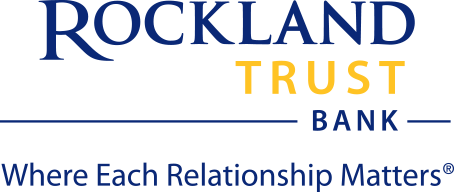Written by Steve Andrews

Where We Stand
The recession watch continues. On May 3, as expected, the Fed raised short-term rates by a quarter-point (0.25%). What remains up for debate is whether this hike would be the last for this rate cycle. Progress has been made on inflation, with Consumer Prices (CPI) in April up 4.9% from a year ago – the first time that annual CPI has dipped below 5.0% in two years – while “Super Core” CPI, which excludes food, energy, rents, and other goods, rose just 0.1% in April. Rents are a lagging indicator which follow home prices, and recent house price data points to softer rents in the months ahead. Over the past 6 months, CPI has been running at a 3.3% annual rate – edging ever closer to the Fed’s 2.0% target.
Meanwhile, Producer Prices (PPI) for goods and services used in the production process rose 0.2% in April following a 0.4% decline in March. The annual rise in PPI fell to 2.3% from 2.7% in March and down from 11.7% in March 2022. Costs for services (+0.3%) lifted PPI, while goods prices rose 0.2%. The PPI data suggests softer prices are working their way through the pipeline and should begin to soften CPI further in coming months.
Meanwhile, Producer Prices (PPI) for goods and services used in the production process rose 0.2% in April following a 0.4% decline in March. The annual rise in PPI fell to 2.3% from 2.7% in March and down from 11.7% in March 2022. Costs for services (+0.3%) lifted PPI, while goods prices rose 0.2%. The PPI data suggests softer prices are working their way through the pipeline and should begin to soften CPI further in coming months.
A Growing Economy
However, the US economy continues to grow, albeit at a slower pace than the second half of 2022. Consumers drive 70% of GDP growth and they remain in good stead. Job gains are slowing, but the unemployment rate at 3.4% sits at 1969 levels and there are still 1.6 job openings for every unemployed worker, and “quits” remain elevated, suggesting that workers still feel comfortable leaving their jobs for better opportunities. Housing continues to recover from its mini recession and US homebuilder sentiment hit a 10-month high in May, rising to 50 from 45 in April, and from its recent low of 31 last December. Lastly, manufacturing, which has been in its own recession as consumers shift spending habits away from goods and toward services, remains in a funk. The manufacturing portion of Industrial Production rose 1.0% in April, but manufacturing should not add much to GDP growth until US inventories are drawn down a bit more.
What’s Next for Interest Rates?
The first rate hike occurred in March of 2022. As of May 3, the Fed has hiked rates ten times. This means the Fed Funds rate moved from near-zero to a target range of 5 – 5.25%. What’s next? We might be seeing a pause in rate hikes? In the comments that were released along with the hike, there were some notable changes since the March FOMC text.
What did they change? They removed language from the March statement that “some additional policy firming may be appropriate” and a reference to “future increases” in the target range. Instead, the May statement indicates that further rate hikes “may be appropriate” with no reference to “future increases” in the target range. Does this suggest that May’s rate hike could be the last for this cycle? The Fed Funds futures market responded by removing any further, predicted rate hikes this cycle, and pricing in rate cuts starting in September, with as many as four quarter-point (0.25%) rate cuts expected by February 1, 2024.
That said, Fed Chair Jerome Powell pushed back against the idea of rate cuts any time soon, saying “it would not be appropriate to cut rates” given that inflation remains elevated and may take a while to return to the Fed’s 2.0% target. The Fed’s favorite inflation metric (Personal Consumption Expenditures, excluding sticky housing costs) has hovered around 4.5% for the better part of the past 12 months. It seems unlikely that the Fed will start to reduce the Fed Funds rate until they see some improvement here, and there’s still the chance of another hike, depending on their view on inflation. The good news is that as long as disinflation remains in place, it takes pressure off the Fed to lift rates further.
In Conclusion
The economic positives and negatives continue to wrestle for control. The jobs report for April wasn’t as strong as the 253,000 headline gain suggests but, at the same time, the regional banking crisis isn’t as bad as headlines suggest either. Q1 GDP looked weak at first glance, but the details showed the economy was stronger than the headline 1.1% growth rate. And, while many see a recession before the year is out, they were forecasting the same thing a year ago. As we did during the longest economic expansion in history (June 2009 – February 2020), we are just taking things a week at a time.





